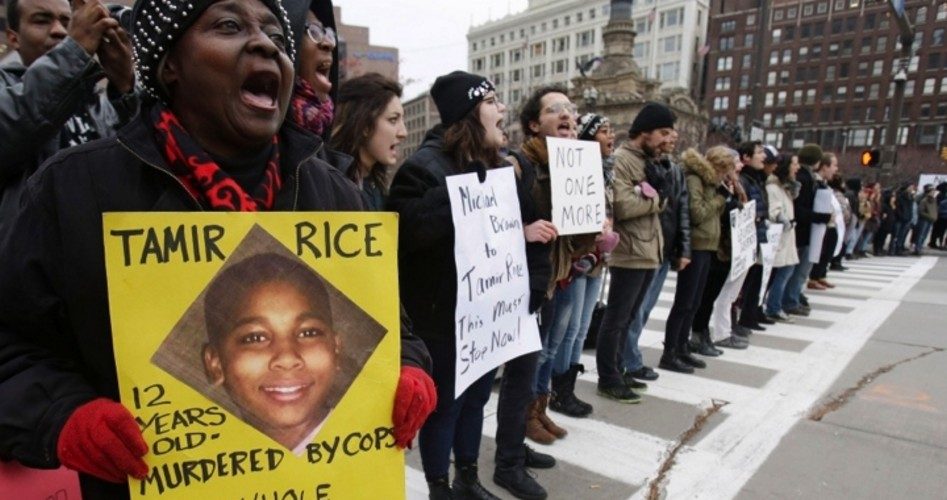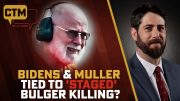
On November 22, 2014, Tamir Rice, a 12-year-old boy, was playing with a toy gun outside the Cudell Recreation Center in Cleveland, Ohio, pointing it at imaginary and real people. A concerned observer called 911, telling the dispatcher that Rice was “probably a juvenile” and that the pistol was “probably fake.”
Those two pieces of information never made it to Officers Timothy Loehmann and Frank Garmback, who instead understood the call to be a “Code 1”: a live-shooter situation involving a “guy pointing a gun at people.” When Garmback’s police cruiser slid to a stop alongside Rice, the officers shouted at him to raise his hands. Instead Rice reached into his pants for the pistol, causing Officer Loehmann to believe his life was in danger and exit the cruiser firing his weapon. One round hit Rice in the stomach, causing his death the following day. The incident was over in less than two seconds.
On Monday, Cuyahoga County (Ohio) Prosecutor Tim McGinty announced that, following a grand jury investigation of the matter that began in October, it declined to indict either officer: “Given this perfect storm of human error, mistakes and miscommunications by all involved that day, the evidence did not indicate criminal conduct by police … [Office Loehmann had a] mistaken yet reasonable belief that he was about to be shot.”
The grand jury looked repeatedly not only at the complete video of the incident, now posted on YouTube, but the enhanced version which showed clearly that Rice, for whatever reason, pulled the pistol from his pants. It was an Airsoft pellet pistol which to the officers appeared to be a Colt Model 1911. The neon plug at the end of the barrel had been removed.
The officers also judged Rice to be a young man in his twenties, standing 5’7” and weighing, according to the autopsy report, 195 pounds. McGinty said, given what they knew at the time, “There was no way the officers could know” the real situation.
When he learned of the grand jury’s decision not to indict, Jawanza Colvin of the Olivet Institutional Baptist Church asked: “Why was this young man not given ample opportunity to comply with [the] officers’ commands?” McGinty replied that the Supreme Court has ruled that decisions in deadly-force cases must be judged “by what he or she knew at the moment, not what we learned later,” adding that split-second decisions cannot later be second-guessed. Said McGinty: “Based on these rules, the actions of Officer Loehmann and Officer Garmback were not criminal.”
During the investigation by the grand jury, Loehmann testified: “With [Rice’s] hands pulling the gun out and his elbow coming up, I knew it was a gun and it was coming out. I saw the weapon in his hands coming out of his waistband and the threat to my partner and myself was real and active.”
McGinty brought in two outside experts to testify during the grand jury’s investigation, a retired FBI agent and a Colorado prosecutor, both of whom concluded that, after looking at all the evidence (the 224-page report of the investigation included interviews with at least 27 people including teachers, friends, and the 911 caller), that the shooting of Tamir Rice by Officer Loehmann was reasonable given the circumstances.
It’s not over for either officer, however. There is an ongoing federal investigation into the matter, along with an internal investigation by the police department. In addition, Rice’s family has just filed a civil rights lawsuit claiming that McGinty’s efforts to inform the jury were slanted in favor of the officers involved. Said the family’s attorneys:
It has been clear for months now that … McGinty was abusing and manipulating the grand jury process to orchestrate a vote against indictment…. Even though video shows the police shooting Tamir in less than one second, Prosecutor McGinty hired so-called expert witnesses to try to exonerate the officers and tell the grand jury [that] their conduct was reasonable and justified. It is unheard of, and highly improper, for a prosecutor to hire “experts” to try to exonerate the targets of a grand jury investigation.
McGinty said that he did recommend that no charges be filed against the officers, but the jury “heard all of the evidence and the applicable law” and “they made the final decision.”
Photo of crowd protesting the Tamir Rice shooting: AP Images
A graduate of an Ivy League school and a former investment advisor, Bob is a regular contributor to The New American magazine and blogs frequently at LightFromTheRight.com, primarily on economics and politics. He can be reached at [email protected].



